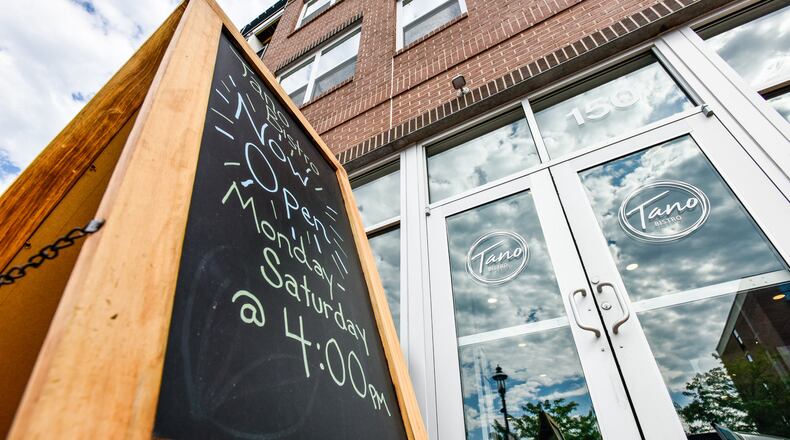“Help Wanted.”
“Closed due to labor shortage.”
“Hours may vary due to staffing.”
During the height of the pandemic two years ago, this made sense. People were sheltering in place, social distancing, canceling events, and otherwise generally following the more hermit-like ways forced upon us by the times.
So why is it still happening now, especially in the food and beverage industry?
“The Great Resignation was a real thing,” said Carla Chalkley, owner of Aladdin’s Eatery’s three Cincinnati-area locations, including the West Chester location. “It’s crazy to me how things have changed. I’ve lived through a lot of trauma in this industry, and I’ve never seen anything like this.”
“We’ve lost a lot of people from our industry,” she added. “They’ve taken remote, work from home positions, or found jobs that pay a little better, and they never came back.”
Statistics back up Chalkley’s observation. Restaurant.org published an article in May calling this time “the most severe labor shortage on record.” While things are looking a little better now, the same article also said jobs were 6.4 percent below pre-pandemic levels with job openings in Ohio growing from 333,000 in June of 2021 to 436,000 in June of 2022.
A recent search of Butler County jobs on Indeed.com found 1,280 jobs under the Food and Beverage category, which was 14.8 percent of all Butler County job postings.
“I feel Cincinnati is in a crisis,” Chalkley said. In addition to her own restaurants, she is also the co-host for Let’s Talk Womxn’s Cincinnati chapter, a collaboration of women restaurateurs. In that position, she is in regular contact with restaurant owners all over the country, and said everyone is going through the same thing. A colleague in Chicago is offering $20 an hour for a dishwashing position, and still can’t fill it.
“I don’t think we’ll ever return to the old days,” she said. “People want to work, but the focus has shifted to work/life balance. I want to give that, because people that have that work better and are more focused because they feel fulfilled - but you still have to do the job.”
This gets echoed by the actions of other restaurants, whether it be shutting down early on a day due to staffing issues, as Hyde’s had to do on a recent Friday, to restructuring from a a sit-down restaurant to a take-our and catering business, the way High Street Cafe in Hamilton did this summer.
“People had a preconceived notion that our industry would never be hurt by anything,” Chalkley said. “Now, no one cares about building a resume, because employers are all so desperate. Right now, a lot of places are hiring anyone with a pulse. Until those tables turn, I don’t see anything changing.”
Some businesses have turned the corner, however. Tyler McCleary, the director of operations for Tano Bistro, said roughly 80 percent of the staff at his Hamilton location have been with the company for a year or more.
“At first, it was extremely hard. We were down to two people in Hamilton, and that’s doing everything,” McCleary said. “We tried job ads, Indeed, all of those things. People ghosting interviews were ridiculous for a while.”
Part of sustaining Tano’s success was building the right culture, he said.
“We promoted someone from within, and that’s changed the culture for us,” McCleary said. “For the first time since Covid, we’re rolling out new programs. We can do marketing for the first time in two-plus years. We want more business.”
Another aspect of the staffing crunch is that instead of seeing familiar places at your favorite haunts, customers are probably noticing ever-changing staff.
“Finding people isn’t hard, finding skilled people is hard,” McCleary said.
“We need more people returning to our industry,” Chalkley said. “You’re forced to keep people who suck because if you don’t, you have no one.”
“I want to think some of the people who left the industry will come back, but I’d be pleasantly surprised if things change that way,” she added.
There is another danger to the industry continuing the way it is, Chalkley said.
“My biggest fear is no one is going to want to open a small business anymore,” she said. “You can’t find anybody to work, and if you can, you can’t pay them. The profit margin on restaurants is so slim to begin with, you’re walking a tightrope all the time.”
About the Author
